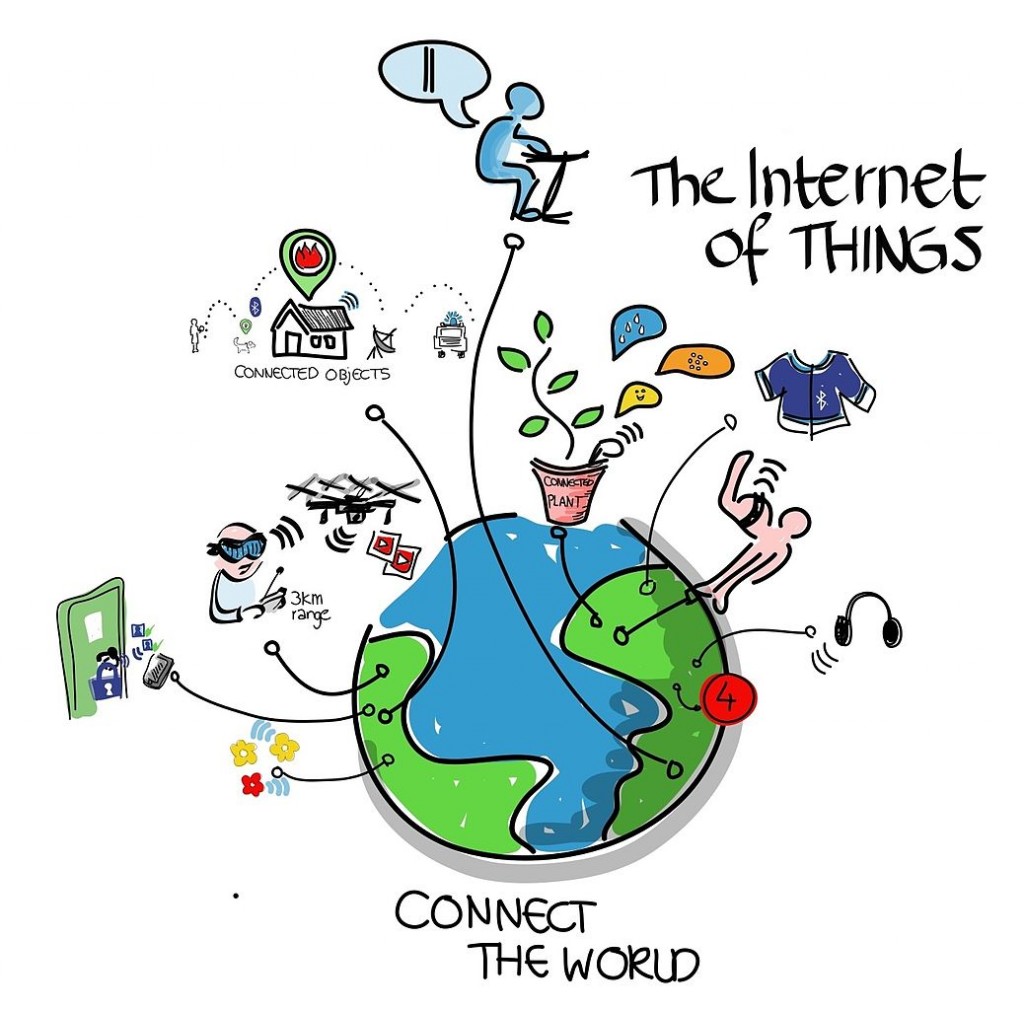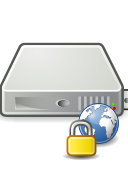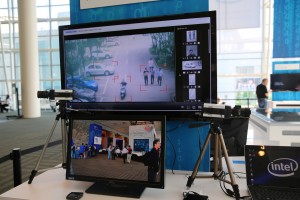 If you haven’t heard the phrase “the Internet of Things,” you’re not alone: according to a study by Accenture, most Americans (87%) are unfamiliar with it. But most of us use IoT-enabled devices every day. It’s an increasingly hot topic, and its implications already have major impact on all of our lives, even in nonprofits, even in fundraising and research.
If you haven’t heard the phrase “the Internet of Things,” you’re not alone: according to a study by Accenture, most Americans (87%) are unfamiliar with it. But most of us use IoT-enabled devices every day. It’s an increasingly hot topic, and its implications already have major impact on all of our lives, even in nonprofits, even in fundraising and research.
Let me back up for a second and describe what the Internet of Things (IoT) is.
IoT is a term describing the increasing mass of interconnected devices we use every day, like…
- mobile phones with GPS and a hundred other applications (like the ability to open your hotel room door, bypassing check-in completely)
- Fitbits, Apple watches, and smart clothing that gather, transmit and track your personal health data
- thermostats that allow you to adjust your home’s temperature remotely
- refrigerators that help you make store lists and have groceries delivered
- life enhancement devices, like Amazon Echo, that hear and respond to your commands … and connect with your home, your car, and more.
- children’s toys with artificial intelligence, like Hello Barbie, which interacts in real time conversations with a child. Servers behind Barbie’s magical conversations store and retrieve what she hears from the child, allowing her to respond appropriately and remember what a child has told her from week to month to year.
- smart lightbulbs with voice-activated Bluetooth speakers and microphones built right in. Why take up valuable space for a baby monitor on the dresser when a light bulb in the crib-side lamp can do double duty?
These items, and thousands more like them gather, store, and share pieces of data with us, with the companies that produce them, and with third party data analysts – both machine and human.
Information like:
- where we are or have been at any given moment
- how active (or sedentary) we are
- what medications we take
- how thermally efficient our homes are
- our news-channel preferences
- our finger and voice prints
- what search strings we enter
- what a child’s home life is like
As IoT capabilities increase, these devices and more like them will provide us with as-yet undreamed convenience and privacy intrusion in fairly equal measure. As Janakiram MSV from Forbes writes,
The real value of enterprise IoT comes from data.”
That aforementioned white paper by Accenture* imagines a near-future day when you won’t need to pay at the pump anymore: your smart vehicle will communicate billing information directly between your car and the fuel dispenser. It notes:
Roads can be embedded with sensors that gather data on traffic and with materials that recharge electric vehicles while being driven.”
Two fascinating articles came out recently on The Internet of Things that I wanted to be sure you didn’t miss.
The first, called “17 mind-blowing ‘Internet Of Things’ facts everyone should read”** is by ‘big data’ expert Bernard Marr. Here are three facts to entice you to have a look:
Back in 2008, there were already more objects connected to the Internet than people. This year, we will have 4.9 billion connected things.
The global market for wearable devices has grown 223% in 2015, with Fitbit shipping 4.4 million devices and Apple selling 3.6 million Apple Watches.
The second article is a Business Insider white paper called How the ‘Internet of Things’ Will Affect the World. The article is not cheap to purchase, but the summary and accompanying data graphic are worth checking out even if you can’t afford the whole report. Authors John Greenough and Jonathan Camhi spent two years researching the market, and here are a few interesting predictions they make:
IoT will be as world-transforming as the Industrial Revolution, and nearly $6 trillion will be spent on IoT-related solutions over the next five years.
Not surprisingly, businesses will be the primary adopter of IoT technology, with government not far behind. In third place will be consumers.
Greenough and Camhi say that what will drive this expansion will be…
- an expansion of internet connectivity
- the proliferation of mobile devices
- the decreasing cost of sensors, and
- increased spending to develop more IoT items.
What will hold it back will include security and privacy concerns as well as a multitude of developers rushing to create devices that are too similar or don’t work collaboratively on one platform.
So what will all of this have to do with nonprofits?
Well, if you work at a hospital, quite a lot. For example, information gathered from sensors that are automatically and continuously analyzed can determine if too many expensive tests, such as MRIs, are being conducted with negative results. Cut out the number of unnecessary tests and you save millions in financial outlay and angst for patients. Is the patient’s insulin pump working correctly? What about her defibrillator implant? A constant network of care, provided by networked IoT devices, will continuously deliver these devices’ status to aid preventive care.
International agencies rushing relief to disaster victims will benefit, too, from smart devices tracking exactly where their supplies are, how fast they can be shipped and reordering replacements automatically. Drones will send video, audio and environment data back to information centers to help assess and coordinate relief efforts. The IoT possibilities are nearly limitless for this important work.
Universities already have years of experience banging the drum on the IoT bandwagon, providing centers for industry-funded research, testing, and analysis (as well as campuses full of eager new-tech adopters). New materials like graphene developed at the University of Manchester will allow for even lighter communicating devices, drug-delivery systems and smart-clothing technology.
IoT devices give us one (or two or three) fewer thing(s) to worry about. (Except for those pesky security and privacy issues). But imagine a necklace or ring that not only vibrates only when you get a message from they key people in your life, but also bleeps you through the turnstyle on public transportation, or through airport security.
Services for the blind, animal shelters, campus dining services, and even development offices will benefit.
(Wait a minute, development offices?)
Yep. Imagine this:
Let’s say you’re a chief development officer on a campus. Your school/university/hospital/museum has already created an app filled with all kinds of information about your campus. App downloaders have provided both their email address and their mobile device number and they can immediately contact you, so both parties have a value-added method of instant two-way communication. For app users, this could include maps, self-guided walking tours, insider information, discounts and more.
For the fundraising unit, if you’ve set up an automatic notification system, you could discover visitors’ areas of interest, see how often a patron comes to campus, and possibly even greet the donor personally next time they arrive (if the app notifies you of their proximity). Voila! You have a whole new way to provide donor cultivation AND a set of data to incorporate into your analytics.
Prospect researchers might be interested to know that there are now search engines springing up to find IoT-enabled devices.  There’s obviously a white hat/black hat issue with using search engines to find IoT devices, but smart organizations that deal with secure donor data (and that’s pretty much every single nonprofit) might just want to use these tools to double check that their servers are locked down nice and tight.
There’s obviously a white hat/black hat issue with using search engines to find IoT devices, but smart organizations that deal with secure donor data (and that’s pretty much every single nonprofit) might just want to use these tools to double check that their servers are locked down nice and tight.
What could the future of IoT bring for fundraising?
We’re already seeing technology being used cleverly for things like stewardship (like one university FaceTiming a donor into an event they sponsored but couldn’t attend halfway around the world), but what about IoT specifically?
Well, it’s an open field, but I’m imagining things like effortless data entry from a fundraiser on the road to the database; voice-recognition security on databases; a proliferation of new kinds of data points for analytics; easy tap-and-go payment options for donors attending an event — the list is just as long as our ability to dream.
How do you think the Internet of Things will impact fundraising and nonprofits? Where do you dream that technology will take us (and what are the perils?)

